#cultural appropriation
Text
I've been listening to a bunch of tiktoks and videos about this new age spirituality tiktok influencer and I don't know about yall but my impressions on new age spirituality beliefs is that it's basically Christianity but hide it under a hodgepodge mismash of appropriated cultures that were originated by BIPOC.
Like, after a while, a lot of new age spirituality stuff sounds like a paraphrased version of angels and the prosperity gospel. It's so insidious and annoying, like these influencers are basically a warped version of televengelists.
35 notes
·
View notes
Text
Baldur's Gate 3 Appropriates Sacred Indigenous Tattoos
I was so disappointed to boot up the character creation for Baldur's Gate 3's full release, only to see they added tattoo designs that are very clearly copying from sacred tattooing practices of the Inuit and the Māori.
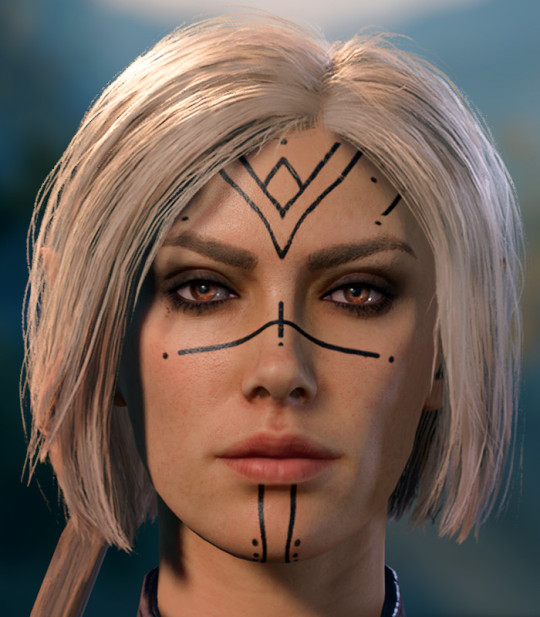
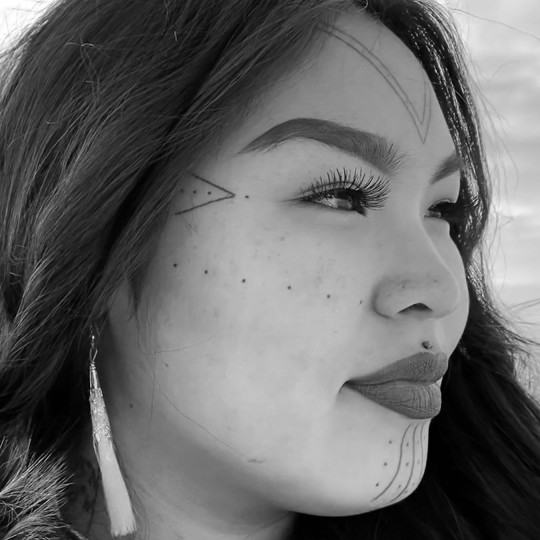
^ This is clearly copying Tunniit.




^ This is clearly copying Tā moko.
Please do not use these tattoos. Larian should never have included these designs. I personally plan on modding them out of the game at the first opportunity.
11K notes
·
View notes
Text

Article Link
"Minnetonka first started selling its “Thunderbird” moccasins in 1965. Now, for the first time, they’ve been redesigned by a Native American designer.
It’s one step in the company’s larger work to deal with its history of cultural appropriation. The Minneapolis-based company launched in the 1940s as a small business making souvenirs for roadside gift shops in the region—including Native American-inspired moccasins, though the business wasn’t started or run by Native Americans. The moccasins soon became its biggest seller.

[Photo: Minnetonka]
Adrienne Benjamin, an Anishanaabe artist and community activist who became the company’s “reconciliation advisor,” was initially reluctant when a tribal elder approached her about meeting with the company. Other activists had dismissed the idea that the company would do the work to truly transform. But Benjamin agreed to the meeting, and the conversation convinced her to move forward.
“I sensed a genuine commitment to positive change,” she says. “They had really done their homework as far as understanding and acknowledging the wrong and the appropriation. I think they knew for a long time that things needed to get better, and they just weren’t sure what a first step was.”

Pictured: Lucie Skjefte and son Animikii [Photo: Minnetonka]
In 2020, Minnetonka publicly apologized “for having benefited from selling Native-inspired designs without directly honoring Native culture or communities.” It also said that it was actively recruiting Native Americans to work at the company, reexamining its branding, looking for Native-owned businesses to partner with, continuing to support Native American nonprofits, and that it planned to collaborate with Native American artists and designers.
Benjamin partnered with the company on the first collaboration, a collection of hand-beaded hats, and then recruited the Minneapolis-based designer Lucie Skjefte, a citizen of the Red Lake Nation, who designed the beadwork for another moccasin style and a pair of slippers for the brand. Skjefte says that she felt comfortable working with the company knowing that it had already done work with Benjamin on reconciliation. And she wasn’t a stranger to the brand. “Our grandmothers and our mothers would always look for moccasins in a clutch kind of situation where they didn’t have a pair ready and available to make on their own—then they would buy Minnetonka mocs and walk into a traditional pow wow and wear them,” she says. Her mother, she says, who passed away in 2019, would have been “immensely proud” that Skjefte’s design work was part of the moccasins—and on the new version of the Thunderbird moccasin, one of the company’s top-selling styles.
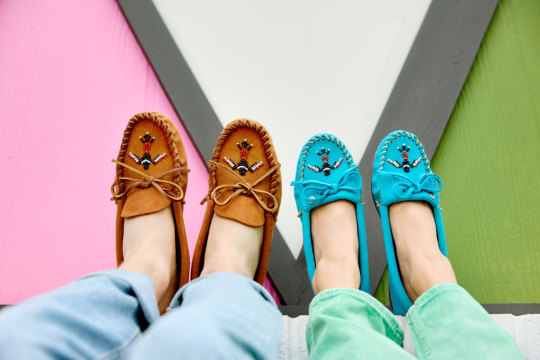
[Photo: Minnetonka]
“I started thinking about all of those stories, and what resonated with me visually,” Skjefte says. The redesign, she says, is much more detailed and authentic than the previous version. “Through the redesign and beading process, we are actively reclaiming and reconnecting our Animikii or Thunderbird motif with its Indigenous roots,” she says. Skjefte will earn royalties for the design, and Minnetonka will also separately donate a portion of the sale of each shoe to Mni Sota Fund, a nonprofit that helps Native Americans in Minnesota get training and capital for home ownership and entrepreneurship.
Some companies go a step farther—Manitobah Mukluks, based in Canada, has an Indigenous founder and more than half Indigenous staff. (While Minnetonka is actively recruiting more Native American workers, the company says that employees self-report race and it can’t share any data about its current number of Indigenous employees.) Beyond its own line of products, Manitobah also has an online Indigenous Market that features artists who earn 100% of the profit for their work.
White Bear Moccasins, a Native-owned-and-made brand in Montana, makes moccasins from bison hide. Each custom pair can take six to eight hours to make; the shoes cost hundreds of dollars, though they can also be repaired and last as long as a lifetime, says owner Shauna White Bear. In interviews, White Bear has said that she wants “to take our craft back,” from companies like Minnetonka. But she also told Fast Company that she doesn’t think that Minnetonka, as a family-owned business, should have to lose its livelihood now and stop making moccasins.
The situation is arguably different for other fashion brands that might use a Native American symbol—or rip off a Native American design completely—on a single product that could easily be taken off the market. Benjamin says that she has also worked with other companies that have discontinued products.
She sees five steps in the process of reconciliation. First, the person or company who did wrong has to acknowledge the wrong. Then they need to publicly apologize, begin to change behavior, start to rebuild trust, and then, eventually, the wronged party might take the step of forgiveness. Right now, she says, Minnetonka is in the third phase of behavior change. The brand plans to continue to collaborate with Native American designers.
The company can be an example to others on how to listen and build true relationships, Benjamin says. “I think that’s the only way that these relationships are going to get any better—people have to sit down and talk about it,” she says. “People have to be real. People have to apologize. They have to want to reconcile with people.”
The leadership at Minnetonka can also be allies in pushing other companies to do better. “My voice is important at the table as an Indigenous woman,” Benjamin says. “Lucie’s voice is important. But at tables where there’s a majority of people that aren’t Indigenous, sometimes those allies’ voices are more powerful in those spaces, because that means that they’ve signed on to what we’re saying. The power has signed on to moving forward and we agree with ‘Yes, this was wrong.’ That’s the stuff that’s going to change [things] right there.”"
-via FastCompany, February 7, 2024
#indigenous#indigenous artists#indigenous art#moccasins#thunderbird#native american#native american art#cultural appropriation#indigenous peoples#cultural representation#minnesota#minnetonka#minneapolis#red lake nation#ojibwe#anishinaabe#reconciliation#fashion#fashion news#good news#hope#indigenous designers#native artist#indigenous artist
1K notes
·
View notes
Text

So this looks like a good read.
Text: after half a year of work, my academic zine on the history of antisemitism & appropriation in western occult movements is done 🖤 a 22-page PDF full of citations, illustrated with historic & public domain images, pay-what-you-want (or FREE!): https://ezrarose.itch.io/fyma-a-lesser-key
twitter thread
Update (not that anybody is looking at the original post anymore):
I have now read this and it is, indeed, very good.
Also, the author/artist is here on tumblr! Check out @sheydgarden
#cultural appropriation#zine#Ezra Rose#a lesser key to the appropriation of Jewish magic and mysticism
19K notes
·
View notes
Text


Tracy Chapman has herself said that she didn’t mind the remake because she is the sole writer of the song, and as such, she appreciates the royalties.
Luke’s version is getting a lot of airtime, but so is Tracy’s original version.

And Luke’s sincere and obvious appreciation of Chapman’s song is just icing on the cake:
When Luke Combs set out to cover Tracy Chapman's 1988 hit “Fast Car”, he did it out of complete admiration for the song
Although not every lyric makes sense being covered by a male vocalist, he decided not to deviate from the original lyrics out of respect for its original songwriter.
“You want to just be mega respectful of the original song,” Combs tells Kelleigh Bannen on Today's Country Radio. “That's why in that song ... it’s, ‘Work in the market as a checkout girl.’ I didn’t change that in my version — I really wanted to just do the original version of the song.”
Combs really wanted to bring the song as it was intended to be in presenting it to a new generation of fans who may have only been vaguely familiar with the original.
“It’s weird because you’re doing a cover of it, and you say, ‘I don’t want to make it my own, because I really just want to shine a light on the original version and bring that.’”
“Because I think there’s so many people that maybe know that song, or it would be familiar to them, but they really don’t know anything about it,” he explains. “They’ve never really listened to it.”
“When I recorded this, literally the engineer in there asked me who I wrote that song with,” Combs adds.
(continue reading)
#tracy chapman#luke combs#fast car#music#grammys#cultural appropriation#cultural appreciation#cultural appreciation vs. cultural appropriation
597 notes
·
View notes
Text
What is Cultural Appropriation?
Cultural appropriation is the wrongful use (e.g. ignorant consumption, theft, bastardization, oversimplification, or unauthorized commercial use) of cultural properties from a culture outside one’s own. If you use cultural customs or iconography without the understanding or regard to how it is meant to be used and by whom, you are appropriating. Similarly, in creative writing, you are appropriating if you divorce elements of a culture from their context and meaning, and bring them into your worldbuilding solely for their aesthetic value (“because it’s cool”).
This is different from “cultural appreciation,” which also involves using or adopting a cultural property, but done so in an appropriate context and often with the guidance or invitation of those from that culture.
Why is appropriation harmful? First, it contributes to the misrepresentation of these cultures in media, even if your work is understood to be fictional or speculative. Real life marginalized groups already have a hard time finding authentic representation. Second, it contributes to the history of colonial appropriation and theft. Stolen art and artifacts, many of which still unattributed or undated, remain in museums and private collections today. All because of people who felt entitled to the aesthetics of their colonial subjects while throwing out their cultural significance.
To avoid appropriation, do your research and engage in dialogue with people from that culture. Read their stories and talk with them. Ask them to critique your work and follow their feedback. Show care and respect.
Further Reading:
See our #cultural appropriation tag.
---
This Q&A is an excerpt from our General FAQ for Newcomers, which can be found in our new Masterpost of rules and FAQs. If you're looking for more resources on POC representation, start there!
-Writing With Color
#writing with color#writeblr#representation#poc representation#cultural appropriation#appropriation#writing advice#writing tips#writers on tumblr#faq
728 notes
·
View notes
Text
17 November 2021
678 notes
·
View notes
Text
"Celtic shamanism" literally does not exist. The Celts never practiced shamanism. Whatever spiritualism that is Celtic in origin, it is not shamanism. White people actually learn your own histories and stop stealing shit from people of color challenge 2024.
#witches of color#cultural appropriation#closed practices#witchblr#paganblr#shamanism#misinformation#racism
398 notes
·
View notes
Text
So... I saw this post that screenshot the discourse between two Black women on Twitter over the usage of "Rest in Power" for Aaron Bushnell's self-immolation is appopriate. As non-Black leftists, I don't think we have a right to wade into the discourse among Black leftists in regards to this. However, I am disappointed and unsettled by some of the notes left on the post by non-Black users:



Black culture, AAVE in this case, has already has been appropriated for a long time, and the term, "Rest in Power" has been co-opted to hell and back by non-Black people. Black people on Twitter have said that they were being harassed for their criticism over using "Rest in Power" for Aaron Bushnell:

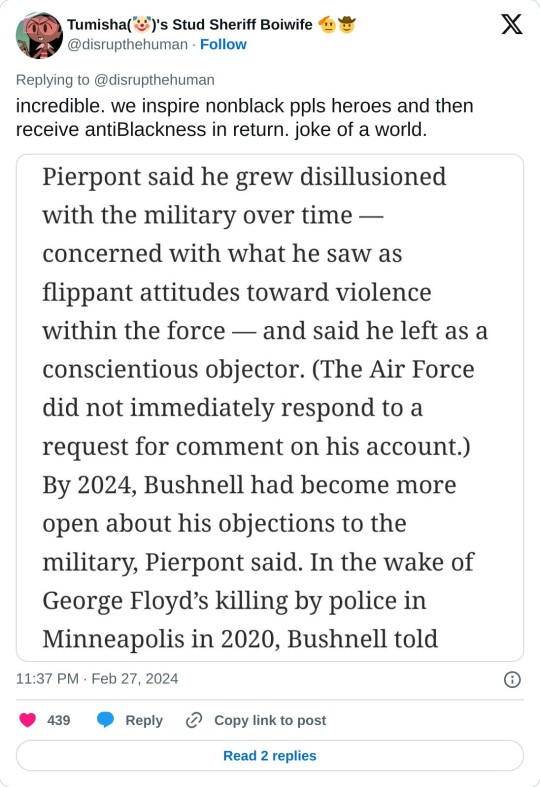
It is important for us as supporters of Palestinian liberation to acknowledge and honor Aaron Bushnell, I also believe that for non-Black allies of Palestinian liberation, we can do that in a way that do not co-opt the language of Black radical movements and definitely does not dismiss the concerns and critiques of our fellow Black allies. Please remember that we always have to be aware of perpetuating antiblackness within the Free Palestine movement. Are we being inclusive in our activism or are we just being performative?
Here are some tweets by Black Twitter users on this:

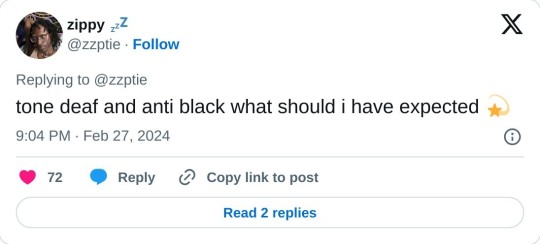



1K notes
·
View notes
Text
It's a bit exhausting to tell very well-meaning progressive global north people that It's okay to accept it if someone from another country or culture offers you something from their culture. It's okay to buy a traditional instrument or have your hair braided and dress up at a museum. If it's being offered BY those people, then it's okay to accept it in that context. Whether it's okay in OTHER contexts and what your behavior about it will be is something else. But stop being weird about people culturally sharing in any way. You're not being respectful you're being condescending in assuming WE don't know what we can or cannot share about us.
#cultural appropriation#please learn what that means before being weird#are tou weird about making sushi or tacos or lamen?#thats culture too
453 notes
·
View notes
Text
Representation vs. Appropriation
When I made a tumblr blog post pointing out that the character creator in Baldur’s Gate 3 included culturally appropriative face tattoos, lot of people decided to bend over backwards to defend this. Excuses I have found while giving my blocking finger a routine work-out thus far have ranged from “Larian Studios is European so they don’t know any better”, to a classic “it’s just a fantasy game, stop being so oversensitive”. But by far the most common poor reaction was, “what if it’s representation?”
Now, two Māori people were quick to jump into this post and say themselves, clear as day, that this is not representation, it is appropriation. That should be enough right there—settlers do not get to decide what is and isn’t representation for us Indigenous folks. But white people not listening to Indigenous voices is nothing new. I’ve been forced to learn that if you want to be taken seriously by settlers, your best chance is to coddle and appease their poor little delicate feelings. So, let’s pretend for a second that these “what if it’s representation?” questions are actually asked in good, albeit ignorant faith, and not just a pathetic gut-reaction to avoid having to critically think about a beloved game. (Which, by the way, I still overall adore myself, mind you.) Let’s pretend they actually want an answer, and give it to them.
It’s very easy to list the examples of positive Indigenous representation I’ve personally experienced in video games, not made by Indigenous folks ourselves, because there’s only one game that comes to mind: Assassin’s Creed 3. The protagonist of AC3 is Ratonhnhaké:ton of the Kanienʼkehá꞉ka people. Ubisoft is a terrible company for other reasons, but they did one thing right in the development of this game: They hired a cultural consultant, Thomas Deer. Deer was able to guide them through avoiding offensiveness and stereotypes, and include proper cultural touchstones that Indigenous players, especially Mohawk players, would want to see. For example, Ubisoft originally wanted to include sacred ceremonial masks in the game, but Deer told them that depictions of these masks would be taboo. He also helped them choose what clothing and jewellery was authentic to the Nation. This, among much more, helped create a truly representative experience. What makes it representation is that it features an Indigenous character in a positive way, without crossing lines into what should not be touched by outsiders. But had Ubisoft decided to ignore Deer’s consultation and go ahead with using those sacred masks… that would have been cultural appropriation.
Cultural appropriation is taking a closed cultural practice and using it yourself, despite not belonging to the culture it comes from. The key word there is closed, as in, something not for outsiders to touch. Eating frybread is not cultural appropriation, because it’s something freely shared by Natives to others. But wearing a fake headdress to your local musical festival is cultural appropriation, because headdresses are sacred regalia not freely shared by Natives to others. It really is that simple: just listen to boundaries set by the People.
“But my fake headdress is just clothing.” “But a fake kakiniit is just ink.” “But my fake totem pole is just decoration.” Except not, and the very fact that you have no respect for the history and meaning behind these things is the perfect example as to why they are not for you. But being told something isn’t for them has always been a hard a pill for settlers to swallow.
The phrase “nothing about us without us” is often used when advocating for rights and respect of minorities. It was first brought into English vocabulary by South Africa’s disability activism in the 1990’s, and has since been adapted across the world as a slogan to mean uplifting voices of the people you claim to want to help, instead of speaking over them. I personally first heard it through EDIRA work (Equity, Diversity, Inclusion, Reconciliation and Accessibility) at my job, and I feel like it can be applied in many different ways, this being one of them. The best representation comes from listening to the people you want to represent. Had Larian done that, they would have known that imitating those tattoos was off limits. But since they didn’t, they took what wasn’t theirs to take. And that’s appropriation.
677 notes
·
View notes
Text
1K notes
·
View notes
Text
Tbh it's fucked up that dreamcatchers are more often associated with a particular flavor of white woman as opposed to...like, the ojibwe people?
465 notes
·
View notes
Text
No, "shamanism" is not found within many cultural practices. The word "shaman" was appropriated from Tungusic spiritual practices and applied to a number of unrelated practices with superficial resemblances to each other instead of just using the local word for whatever said practice was called.
536 notes
·
View notes
Text
Thanksgiving/Day of Mourning
Last year, I made a very quick, basic post about thanksgiving: Indigenous Day of Mourning aka Thanksgiving. if you want the sources for what I’m about to say, check there.
This post will be about why you cannot just go “fuck the pilgrims, we deserve a harvest festival no matter the origin” or anything else that tries to sanitize the holiday.
You Are Still On Stolen Land
As a result, you are still actively profiting off the genocide the pilgrims committed.
I don’t care how educated about racial issues you profess you are. I don’t care how you behave the other 364 days of the year. If you try to distance yourself from the origins of Thanksgiving simply because it makes you uncomfortable to see the blood under the tablecloth, you’re not practised in sitting with actually being anti-racist. You know what to say, but you don’t practice what you preach.
You Are Eating Our Food
Pumpkins/squash, beans, turkey, cranberries, potatoes, corn, sweet potatoes, pecans, maple syrup?
Those are all Native American foods that we taught you how to grow and harvest.
You wouldn’t have any of your traditional Thanksgiving foods without us. The ideal meal of Thanksgiving is ripped right from Indigenous practices and cannot be separated from it.
The fact that these foods have been taken out of Indigenous hands and appropriated by colonizers as the bounties they somehow deserve for landing here is a tragedy, and people need to remember where their food comes from and who had been growing it for thousands of years.
You Had So Much Because Of Massacre
Thanksgiving became an annual tradition after 700 Pequot men, women, children, and elders were killed, freeing up acres of land that colonizers promptly took over. The sheer amount of extra acreage that colonizers had because of their genocide contributed to the excess of food experienced during Thanksgiving. That land had been structured to support more people originally.
Colonizers had never, ever, deserved that much food. They were taking more than they needed, not leaving much behind for the animals that depended on a balance to be held with humans. They took far more than was needed, throwing the balance off in nature.
Maybe I’m reaching. But I think that if you suddenly had 700 less people in the area, after all of the growing and planting for the total population had been done, you’d have excess food? Or even before the growing, you’d have land set up to support 700, that I’d assume you’d still use, when you were a much smaller population?
Sit With Your Own Grief
If this makes you feel bad and that you shouldn’t celebrate Thanksgiving? Sit with that.
I’m not telling you that you have to give up Thanksgiving traditions. I’m telling you that you cannot divorce them from Indigenous people.
You are giving thanks for our massacre. You are giving thanks for stealing so much from us that you had this excess.
Yes, you can need a break; yes, you can need time with family and friends. None of this is inherently bad.
It’s not even bad to eat local food from Turtle Island! Part of having a sustainable diet is eating locally, in time with the seasons.
But remember, it is Indigenous people who first gave this to you—and then you stole far more than you ever needed from us, killing us to get what you felt you deserved.
Do not divorce Thanksgiving from Indigenous people for your own comfort.
We are still here. We must live with the aftermath of colonizers stealing from us every single day.
If you feel this way hearing about our history, imagine what we feel like living it.
Donate to a local org/Indigenous person this Thanksgiving
I (again) don’t have the spoons to compile a list of vetted charities, but look for local tribe language revival programs, COVID relief funds, and activism around the Indian Child Welfare Act currently in front of the Supreme Court.
Pay reparations for what you have taken, and remember. It is also Indigenous Day of Mourning.
Indigenous people, drop your links below.
~Lesya
#thanksgiving#native american#Holidays#ally#Indigenous day of mourning#genocide#cultural appropriation
4K notes
·
View notes
